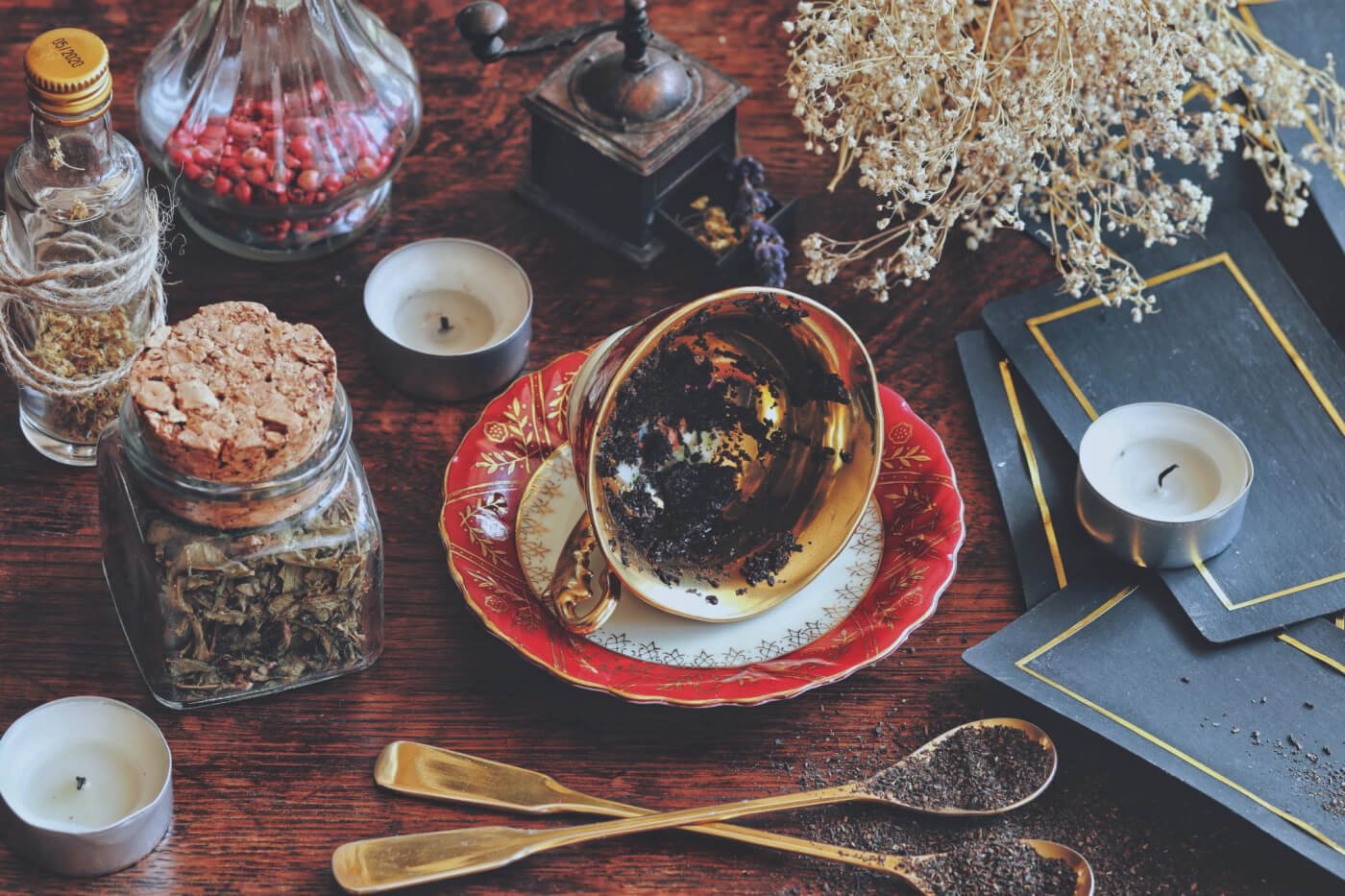The future can be found in a cup of tea. From Victorian England to modern divination practices, reading tea leaves has been a magickal way to peer into a cup of herbs and gaze into what is perhaps possible.
The art of identifying symbols through tea leaves is called Tasseography or Tasseomancy. This word comes from the French tasse meaning cup, the Greek graph meaning writing, and mancy as related to divination. While tea leaves are quite popular for this sort of divination, some practitioners turn to coffee grounds or wine sediment for a similar practice.
The History of Tasseography
Tasseography became popularized during medieval Europe where diviners would read fortunes from molten substances like wax or lead. After tea was introduced to Europe these practices shifted to work with tea. During the rise of self-analysis and divination, Tasseography became popular among practitioners who would spend time connecting with their teacups.
How to Read Tea Leaves
To practice tea leaf reading, the diviner must interpret patterns of tea leaves left behind in a teacup or vessel. While the practice is simple in itself, interpretation and intuition can be developed and sharpened to better understand the messages.
If possible, use a light-colored cup in order to see the messages more clearly. To read tea leaves, first place a pinch of loose-leaf tea into a cup, pouring hot water over the leaves (no strainer is needed for this practice).
As you sip your tea as usual, become more grounded, and set your intentions for the reading. Asking a question of the leaves can be a beautiful and supportive way to guide reading. Be as concise, clear, and specific as possible. If it helps, you may write out your question beforehand or even speak it aloud.
When there is a small amount of liquid remaining, move the cup in a clockwise circle three times with your left hand, and turn the cup upside down allowing the liquid to drain. Return the cup to face upward and read the leaves, placing the handle towards the south.
How to Interpret the Tea Leaves
To interpret the leaves, pay attention to where the leaves fall on the surface of the cup, the symbols that are presented, and also the size of the symbols. All of these elements will play a role in what the messages are. There are classic resources that can help you piece together the story of your reading, but you can also pay attention to what comes up for you from your own stories and symbolic associations. Reading Tea Leaves by an unnamed Highland Seer written in 1881 is the oldest book on the subject in English.
You may see letters, numbers, animals, objects, or other potent symbols as you gaze into the leaves and interpret what you see.
Tea Leaf Symbols
Some possible tea leaf symbols may be an acorn symbolizing good health or slow and steady growth, an ax may appear to add an element of difficulty, or a hawk to remind you to pay attention. Try crafting your own list of symbols and associations as you practice this art.
Wild & Weedy Apothecary by Doreen Shababy

$ 19.99
"Those who dare delve into this book may emerge with catnip on their breath, mud on their knees, wild fruit juices on their hands, and a mysterious, satisfied smile―the very image of a wild and weedy woman. Come on!" ―Susun S.… read more










